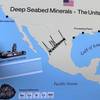$17.1M for Container Cargo Security Program
These grants were awarded under the third phase of Operation Safe Commerce, a program through which ports, federal, state, and local governments, and private businesses work together to identify, test, and share information about commercially available technologies and best business practices to improve the security of the supply chain.
“Operation Safe Commerce takes a partnership approach to developing innovative new ways for ports to track and protect cargo entering the United States from all over the world,” said Matt A. Mayer, Acting Executive Director of the Office of State and Local Government Coordination and Preparedness. “Through this effort, we are adding another layer of security to raise our level of port protection and fulfill our commitment to securing our homeland against all threats of terrorism, whether from air, land, or sea.”
The awards announced today are: $6.7 million to the Ports of Los Angeles/Long Beach; $5.2 million to the Ports of Seattle/Tacoma; and $5.2 million to the Port Authority of New York/New Jersey. Prior to these new awards, the three load centers have received a total of $55 million under Operation Safe Commerce, including a total of $13.7 million for Los Angeles/Long Beach, $27.5 million for Seattle/Tacoma; and $13.8 million for New York/New Jersey.
Operation Safe Commerce is administered by the Department of Homeland Security’s Office of State and Local Government Coordination and Preparedness (SLGCP) in cooperation with an inter-agency steering committee, which ensures that grant funds are used to address priority vulnerabilities and support the results of testing conducted during the different phases of the program. SLGCP is the Department of Homeland Security’s primary source of assistance for state, local, and collaborative initiatives to improve the nation’s ability to prevent, prepare for, and respond to terrorism. Members of the inter-agency steering committee include the Departments of Transportation, State, Defense, and Commerce, and four components of the Department of Homeland Security: the U.S. Coast Guard; the Border and Transportation Security Directorate; Customs and Border Protection; and the Transportation Security Administration.









